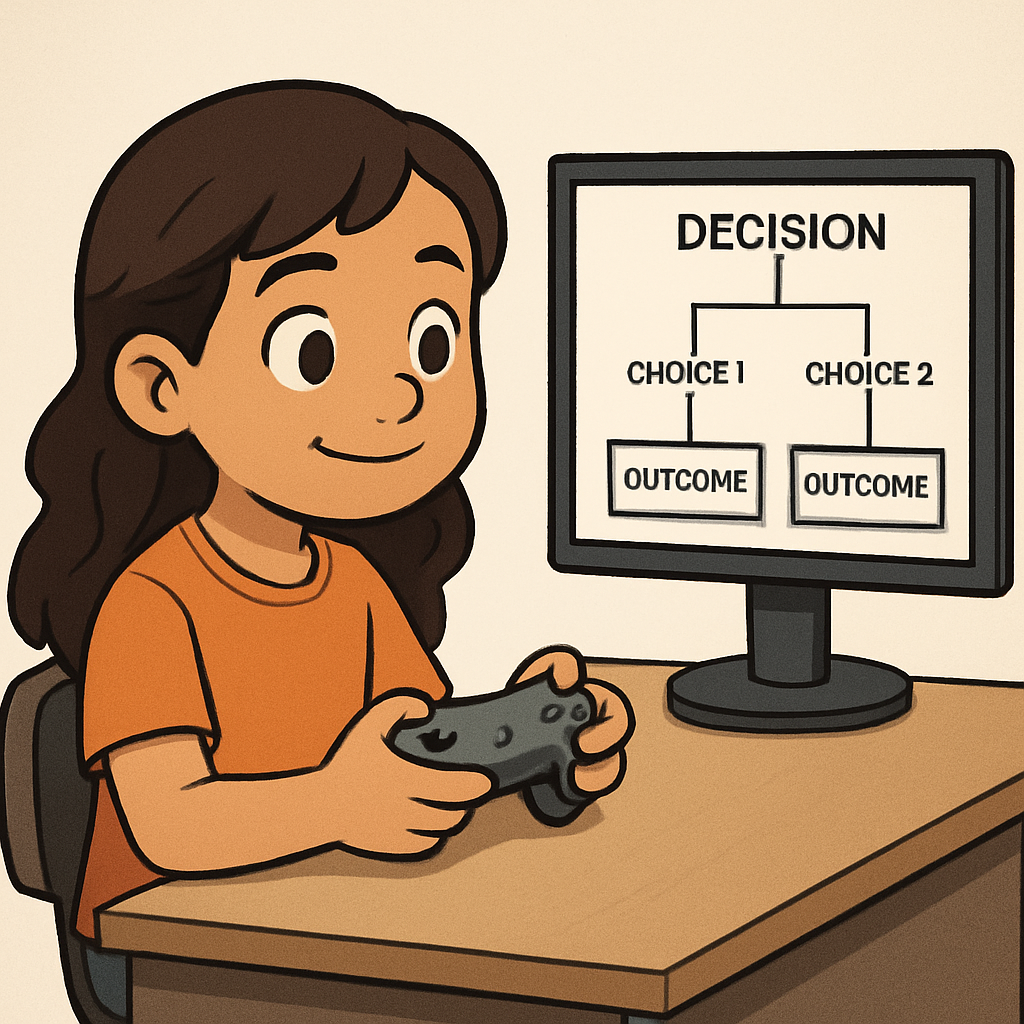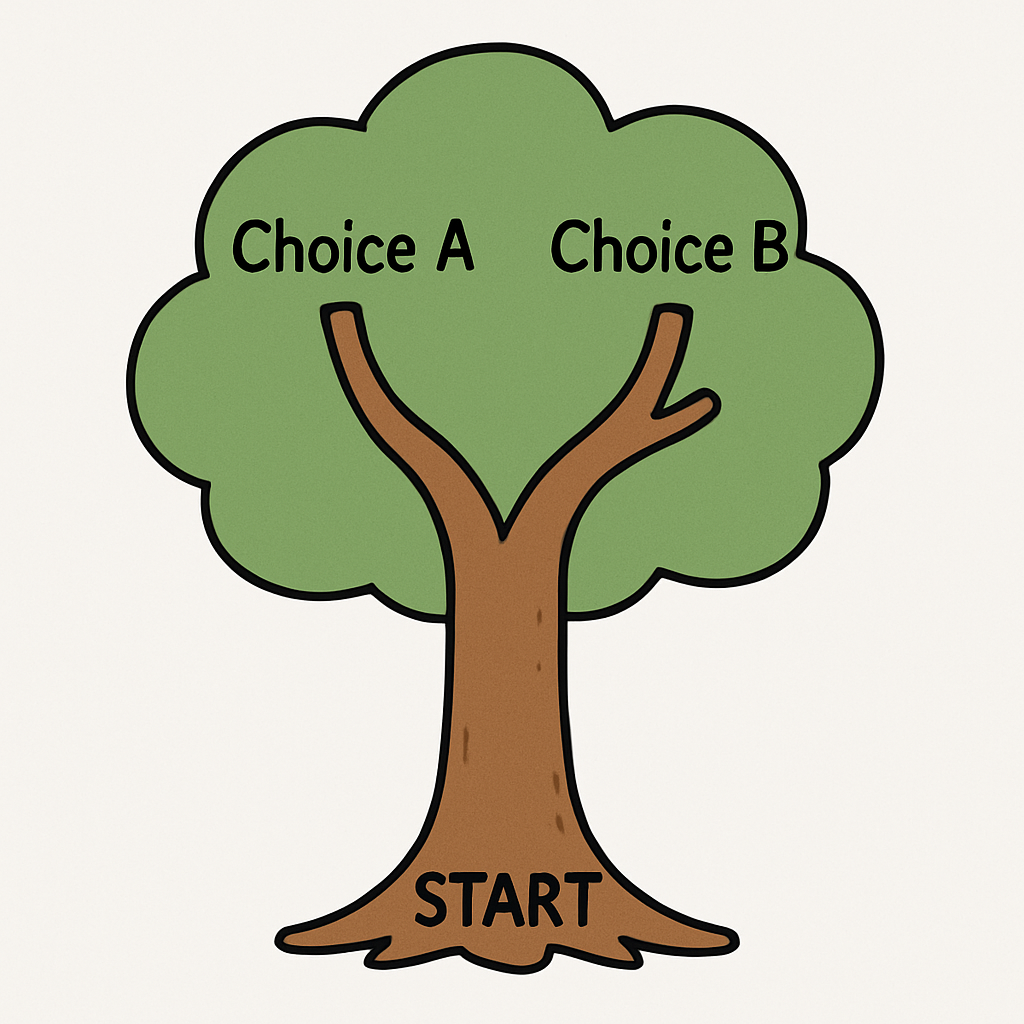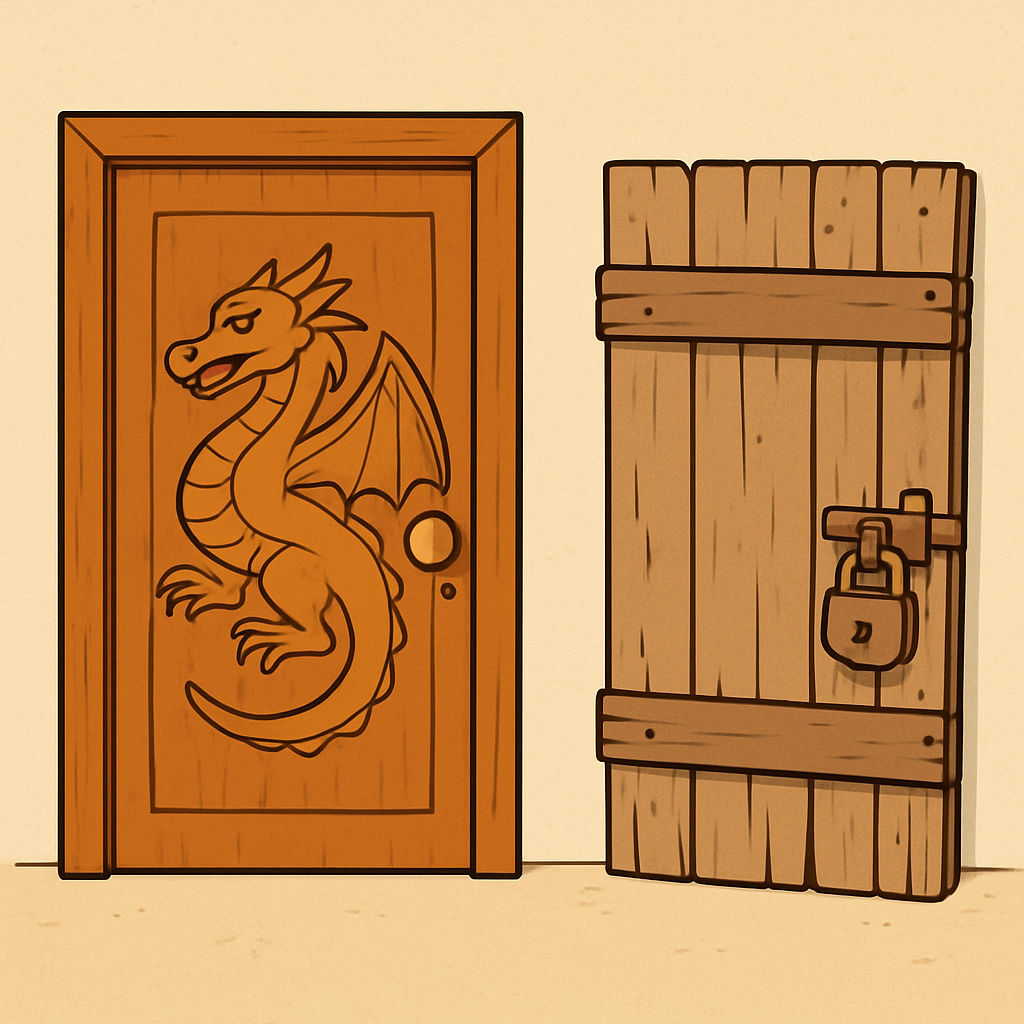This lesson introduces students to interactive storytelling and branching logic by exploring the "Choose Your Own Adventure" format. Your students will learn how a story can change and adapt based on decisions, a core concept in video game design and interactive media.
The lesson will begin with a discussion on choices in video games, using a tree diagram to visualise the different paths a story can take. You'll then guide the class through creating a collaborative story using index cards. Finally, students will work in groups to design and create their own branching narratives, with built-in opportunities for debugging their story's logic.

Start by asking students to think about their favourite video game. Ask them, "How does the game change when you make different decisions?"
Prompt them with specific questions, like "What if you choose to go left instead of right?" or "Do you always have to fight the bad guys, or can you hide from them?"
Explain that video games are built on a system of choices. Each time a player makes a choice, the program has to decide what happens next. This is called branching logic, and it's what allows a single game to have multiple possible paths and outcomes.

Draw a simple tree on the board. Explain that this diagram represents how a branching narrative works. Start by drawing the trunk and labeling it START. Then, draw two branches coming off the trunk and label them Choice A and Choice B.
Explain that a branch is a separate path the story can take. A program, just like a person, has to follow one path at a time. This is where if... then... else... logic comes in! The program essentially says: If the player chooses A, then go down this path. Else (if they choose B), go down the other path.
 Now, you'll write a very short adventure together as a class. You will be the narrator, and your students will be the programmers.
Now, you'll write a very short adventure together as a class. You will be the narrator, and your students will be the programmers.
Write the following opening on the board to set the scene:
"You are standing in front of two doors. One is made of solid oak and has a dragon carved into it. The other is a rickety wooden door with a rusty lock. Which door do you open?"
Explain that you will use index cards to keep the story organised. Each card is a new 'scene' or 'page' in the program. As the students make their choice, draw a simple flowchart on the board to show the path the story takes:
Card #1: (Opening text) Choice: A (Oak Door) or B (Rusty Door)?
If A, go to Card #2. If B, go to Card #3.
Work with the class to write the text for Card #2 and Card #3, based on their choices. As students will see, the story can have two very different outcomes, all because of one small choice. This reinforces that a computer has to follow a specific set of instructions to get to the correct ending.
It helps to have a happy ending and a sad ending in your example. Something like:
Card #2 (The Oak Door): The door creaks open to reveal a treasure chest full of gold. You are rich!
Card #3 (The Rusty Door): The door falls off its hinges and you land in a pit of angry squirrels.
 Now it's the students' turn to be story programmers! Split the class into groups. Each group will be a team of programmers, and their job is to create their own branching narrative using index cards. Give each group a stack of index cards and explain the four components every card needs.
Now it's the students' turn to be story programmers! Split the class into groups. Each group will be a team of programmers, and their job is to create their own branching narrative using index cards. Give each group a stack of index cards and explain the four components every card needs.Card Number: Every card must have a number at the top (e.g., #1, #2, etc.). This is how the computer, or the reader, knows where to go.
Story Text: Write a short paragraph that sets the scene.
Decision: Include a clear choice for the reader, with two options.
Go-To Instructions: Below the choices, write the if... then... logic: If you choose (A), then go to Card #X. If you choose (B), then go to Card #Y.
Groups must create a complete, branching narrative with a clear beginning, at least one major decision point, and at least two different possible endings.
Encourage them to draw a simple flowchart on a scrap piece of paper first to map out their story's branches. This helps them visualise their branching logic before they start writing.